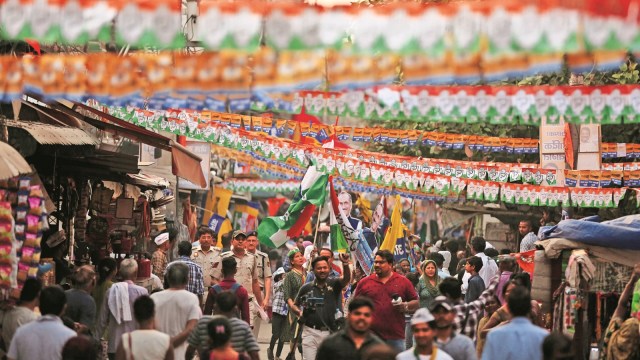
On the three seats that the Congress candidates contested from, the assembly segments that the alliance retained were the same as the ones where the vote share of the two parties was higher than that of BJP in 2019 (see box).
Story continues below this ad
In segments such as Ballimaran, Okhla, Matia Mahal, Chandni Chowk, Seelampur, Mustafabad and Babarpur, traditional Congress strongholds before the AAP stormed into power in 2015, the BJP could muster only almost half the votes polled in favour of alliance candidates. This was not the case in either slums or unauthorised colonies, several of which went in BJP’s favour.
Improvement was seen in constituencies where AAP fielded candidates, with the party gaining votes in Jangpura, Delhi Cantonment, New Delhi, RK Puram, Ambedkar Nagar, Sangam Vihar, Tughlakabad, Rajouri Garden, and Tilak Nagar.
According to detailed 2024 voting statistics compiled by the Election Commission of India (ECI), with a little over 53,700 votes and a margin of slightly above 5,100, AAP’s Tughlakabad MLA Sahi Ram, who contested from the South Delhi Lok Sabha seat, was the sole incumbent legislator to secure the assembly segment he represents.
The segment went to BJP in 2019.
To be sure, each Parliamentary constituency has 10 Assembly segments.
On the other hand, AAP’s Malviya Nagar MLA Somnath Bharti, who contested from the New Delhi seat, and Kondli legislator Kuldeep Kumar, who fought from East Delhi, failed to retain their own segments by margins of 3,923 and 1,566, respectively. BJP won both segments in 2019, too.
Story continues below this ad
In the New Delhi Constituency, the AAP secured Chief Minister Arvind Kejriwal’s own New Delhi Assembly segment by a razor-thin margin of a little more than 2,200. The segment was won by the BJP last time.
A senior AAP leader said that while on paper there may be some positives for the party, the final result was disappointing.
“Elections and alliances are not arithmetic. The truth is that we had hoped to get a much better result. The gains are mostly in segments where the BJP’s margins were narrower the last time. When we look at the behaviour of voters in neighbouring states such as Uttar Pradesh and Haryana, it is clear that we were not able to convince the voter in Delhi,” the leader said.
Another leader said that the results indicate that the floating voter, which votes for Prime Minister Narendra Modi in Lok Sabha and AAP in assembly polls — seen as a centre-of-right voter — was not swayed by the alliance.
Story continues below this ad
A senior Congress leader, however, said that the lack of coordination between the workers of the two alliance partners was the reason behind the 7-0 rout.
“In many seats, it was clear that the AAP workers were either outsiders or were not motivated. Why this was the case only the AAP can answer, but it had the effect that the BJP was hoping for,” the leader said.









